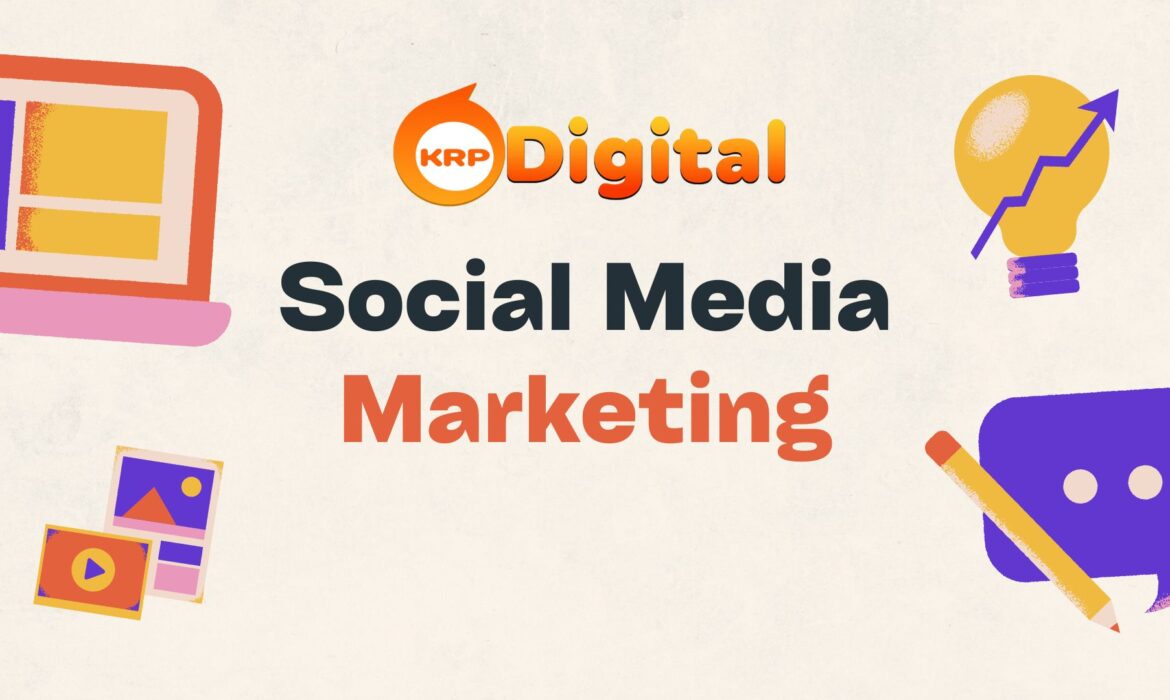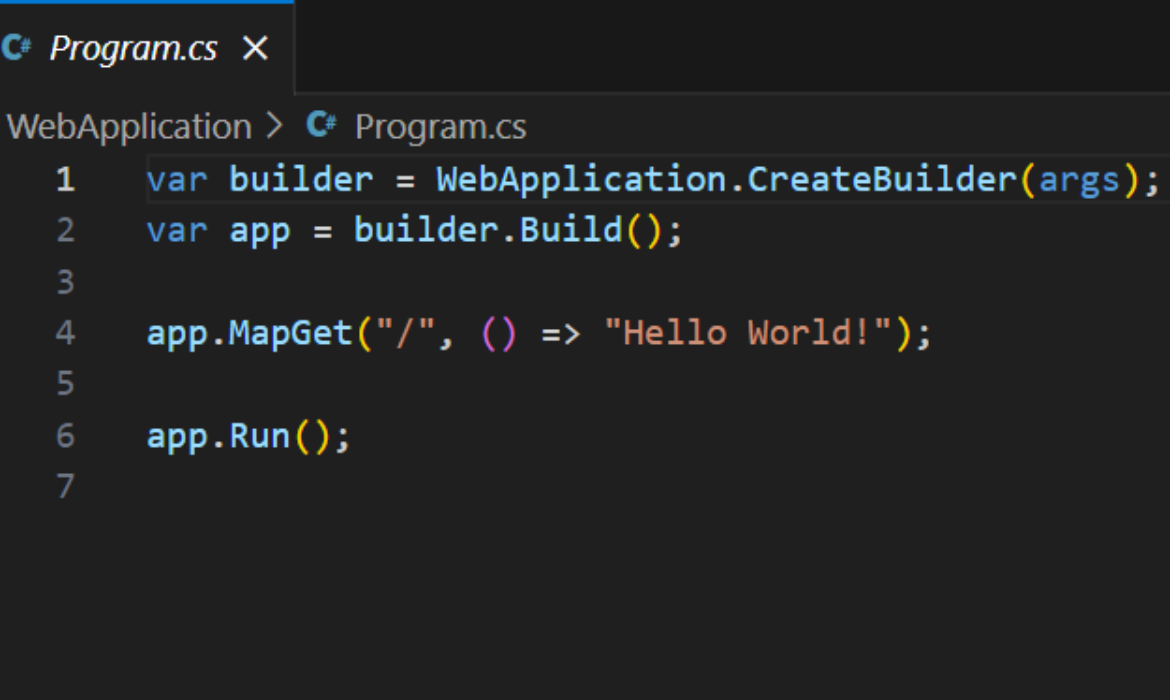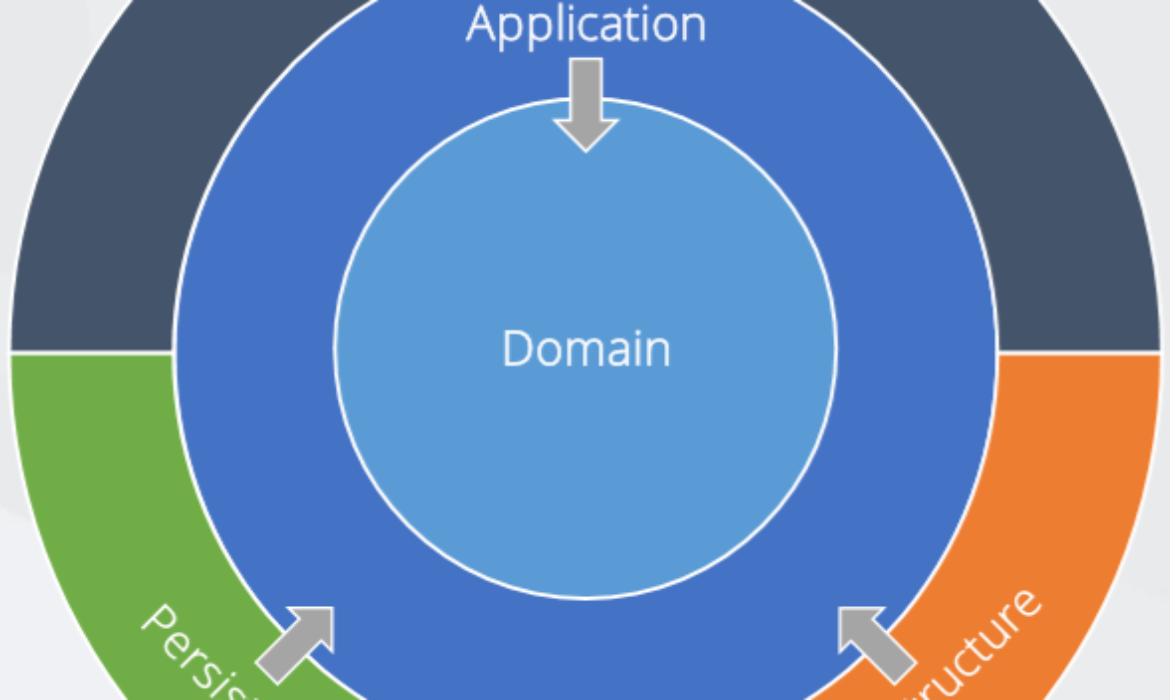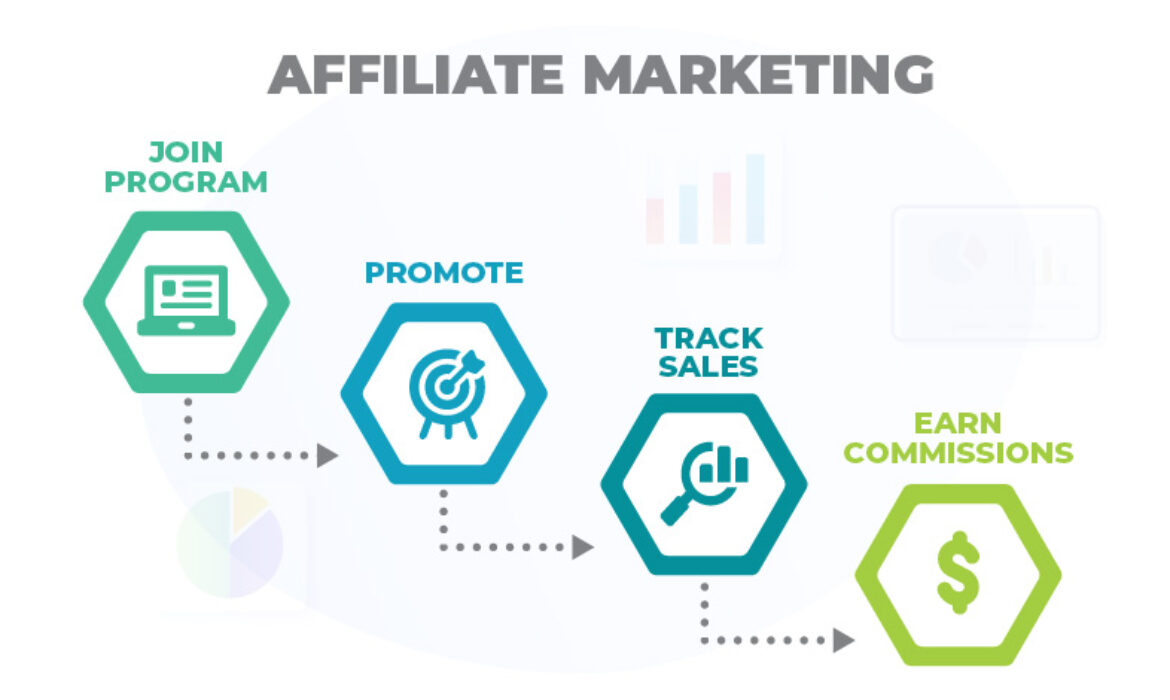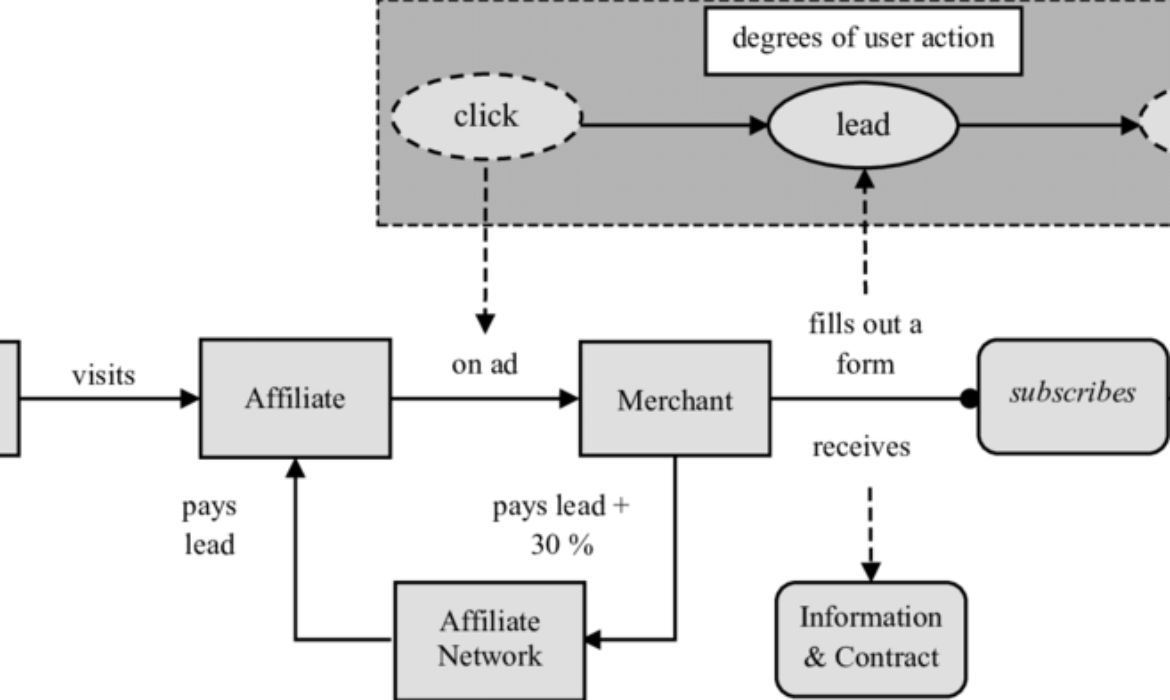How to Create Backlinks from Comments on Other Sites
Introduction
Backlinks, also known as inbound or incoming links, are links from one website to another. They play a crucial role in search engine optimization (SEO) by helping to improve your website’s authority and ranking. One effective and often overlooked method of building backlinks is through commenting on other websites. When done correctly, this strategy can drive traffic to your site and enhance your SEO efforts.
Why Backlinks from Comments Matter
Comments can be a valuable source of backlinks if they are placed on relevant and high-authority sites. These backlinks can help in several ways:
- Increase Visibility: Your website gains exposure to a new audience.
- Improve SEO: Search engines view backlinks as a sign of credibility and relevance.
- Drive Traffic: Engaging comments can attract users to click on your link.
Steps to Create Backlinks from Comments
1. Identify High-Quality Sites
Focus on websites that are relevant to your niche and have high domain authority. Tools like Moz’s Link Explorer or Ahrefs can help you determine a site’s authority.
2. Engage with Relevant Content
Comment on blog posts, articles, or forums that are closely related to your industry. Your comment should add value to the discussion and not just be a link drop.
3. Provide Value in Your Comments
Craft thoughtful, insightful comments that contribute to the conversation. This increases the chances that your comment (and link) will be approved and appreciated by both the site owner and readers.
4. Use Your Real Name and Information
Using your real name and a genuine email address helps establish credibility. Avoid using keywords as your name, as this can appear spammy.
5. Include Your Link Naturally
If allowed, include your link in a way that naturally fits within your comment. Some sites have a dedicated field for your website URL. Use this field appropriately.
6. Follow Comment Guidelines
Adhere to the comment policy of each site. Some sites may not allow links in comments, so always check the guidelines before posting.
7. Monitor Your Backlinks
Use tools like Google Search Console or other backlink monitoring tools to keep track of the backlinks you are generating from your commenting efforts.
Best Practices for Commenting
- Be Authentic: Genuine comments are more likely to be approved and appreciated.
- Stay Relevant: Comment only on articles that are relevant to your industry.
- Avoid Over-Posting: Too many comments on various sites can appear spammy. Focus on quality over quantity.
- Respond to Replies: Engage with users who respond to your comments. This helps build relationships and increases visibility.
Potential Pitfalls
- Spammy Comments: Avoid generic comments like “Great post!” with your link. These are often flagged as spam.
- Keyword Stuffing: Using keywords in place of your name or in an unnatural way can lead to your comment being deleted.
- Irrelevant Sites: Commenting on sites unrelated to your niche can harm your credibility and SEO efforts.
Conclusion
Creating backlinks from comments on other sites is an effective strategy when done correctly. By focusing on high-quality, relevant sites and providing valuable insights in your comments, you can build meaningful backlinks that enhance your SEO strategy. Remember to be genuine, follow site guidelines, and always provide value in your comments.
By integrating these practices into your SEO strategy, you can boost your website’s authority, drive traffic, and improve your search engine rankings. Happy commenting!
The Ultimate Guide to Social Media Marketing (SMM) in 2024
Introduction
In 2024, Social Media Marketing (SMM) continues to be a pivotal component of digital marketing strategies for businesses of all sizes. With platforms like Facebook, Instagram, Twitter, LinkedIn, TikTok, and Pinterest evolving constantly, staying updated with the latest trends and tools is crucial for effective brand promotion and audience engagement. This guide provides a deep dive into the essentials of SMM, offering actionable insights to help you stay ahead of the curve.
Understanding Social Media Marketing
Social Media Marketing involves using social media platforms to connect with your audience to build your brand, increase sales, and drive website traffic. It encompasses publishing great content on your social media profiles, listening to and engaging with your followers, analyzing your results, and running social media advertisements.
Key Trends in Social Media Marketing for 2024
- Short-Form Video Content: Platforms like TikTok and Instagram Reels have popularized short-form videos, which are now crucial for engagement.
- Social Commerce: Integrating e-commerce with social media platforms to allow direct purchases from posts and ads.
- Personalized Marketing: Using data and AI to tailor content and advertisements to individual user preferences.
- Ephemeral Content: Stories and temporary content continue to drive high engagement.
- Augmented Reality (AR) Experiences: AR filters and interactive content are enhancing user engagement.
Strategies for Effective Social Media Marketing
- Define Your Goals: Whether it’s brand awareness, lead generation, or customer loyalty, clear goals will shape your strategy.
- Know Your Audience: Use analytics tools to understand your audience demographics, preferences, and behaviors.
- Create Engaging Content: Use a mix of images, videos, infographics, and articles that resonate with your audience.
- Consistency is Key: Regular posting and maintaining a consistent brand voice across all platforms.
- Leverage Influencers: Partner with influencers to amplify your reach and credibility.
- Utilize Paid Advertising: Social media ads are powerful for reaching targeted demographics and driving conversions.
Essential Tools for Social Media Marketing
- Hootsuite: For scheduling posts and managing multiple social media accounts.
- Canva: For creating visually appealing graphics and content.
- Google Analytics: For tracking and analyzing social media traffic.
- BuzzSumo: For content research and influencer identification.
- Buffer: Another excellent tool for scheduling posts and analyzing performance.
Measuring Success in Social Media Marketing
- Engagement Metrics: Likes, shares, comments, and mentions.
- Reach and Impressions: The number of unique users who see your content.
- Conversion Rate: The percentage of users who take a desired action (e.g., click a link, make a purchase).
- Referral Traffic: Traffic directed to your website from social media platforms.
- Customer Feedback: Direct feedback from customers through comments and messages.
Conclusion
Social Media Marketing is a dynamic and ever-evolving field. By staying informed about the latest trends, leveraging the right tools, and crafting a well-defined strategy, businesses can harness the power of social media to achieve their marketing goals in 2024.
Understanding and Resolving FileNotFoundException in .NET
Introduction
As a .NET developer, you will often handle various file operations, such as reading from or writing to files. One common error you might encounter is the FileNotFoundException. This error occurs when your program attempts to access a file that does not exist. Understanding the causes of this exception and knowing how to resolve it are crucial for building robust applications. In this blog post, we’ll delve into the details of FileNotFoundException, its common causes, and how to effectively handle it.
What is FileNotFoundException?
FileNotFoundException is an exception thrown by the .NET framework when an attempt to access a file that does not exist fails. This can happen during various file operations, such as opening a file for reading or writing.
Common Causes of FileNotFoundException
- Incorrect File Path: The most common cause of
FileNotFoundExceptionis an incorrect file path. This could be due to typographical errors, wrong directory paths, or the file not being in the expected location. - File Deleted or Moved: The file might have been deleted or moved to a different location after the path was specified in the code.
- Case Sensitivity: On systems that are case-sensitive, like Unix-based systems, mismatches in the case of the file name can lead to this exception.
- Permissions Issues: Lack of proper permissions to access the file can also result in a
FileNotFoundException, although this is less common and often throws different exceptions.
How to Handle FileNotFoundException
- Verify File Path: Ensure that the file path specified in the code is correct and the file exists at that location. This can be done using tools or writing a simple check in your code.csharpCopy code
if (!File.Exists(filePath)) { Console.WriteLine("File not found: " + filePath); return; } - Use Try-Catch Block: Wrap your file access code in a try-catch block to gracefully handle the exception and provide meaningful error messages.csharpCopy code
try { using (StreamReader sr = new StreamReader(filePath)) { // Read file contents } } catch (FileNotFoundException ex) { Console.WriteLine("File not found: " + ex.FileName); } - Logging and Alerts: Implement logging to record such errors, which can be useful for debugging and alerting purposes.csharpCopy code
try { // File operations } catch (FileNotFoundException ex) { Logger.Log("File not found: " + ex.FileName); AlertService.NotifyAdmin("Critical file missing: " + ex.FileName); } - Ensure Deployment: Make sure that all necessary files are included in your deployment package and are deployed to the correct locations.
Preventing FileNotFoundException
- Input Validation: Validate all input paths to ensure they are correct and point to existing files.
- Environment Configuration: Use environment variables or configuration files to manage file paths, making it easier to adjust paths without changing the code.
- Automated Tests: Write automated tests that include checks for file existence, especially for critical files that your application depends on.
- Proper Exception Handling: Always include robust exception handling for file operations to ensure your application can handle missing files gracefully.
Conclusion
The FileNotFoundException is a common but easily manageable exception in .NET development. By understanding its causes and implementing proper checks and exception handling, you can prevent and resolve this error efficiently. Ensuring accurate file paths, validating inputs, and using try-catch blocks are some of the best practices to handle FileNotFoundException. By following these guidelines, you can enhance the robustness and reliability of your applications.
Understanding and Preventing NullReferenceException in .NET How to fix.
Why Does NullReferenceException Happen?
In .NET, reference types can be null, meaning they don’t point to any object. When you try to call a method or access a property on a null reference, you get a NullReferenceException. For example:
csharpCopy codestring myString = null;
int length = myString.Length; // This will throw a NullReferenceException
In this code, myString is null, so trying to access its Length property causes an exception.
Common Scenarios Leading to NullReferenceException
- Uninitialized Variables:csharpCopy code
MyClass obj; obj.DoSomething(); // obj is not initialized - Missing Object Creation:csharpCopy code
MyClass obj = null; obj.DoSomething(); // obj is explicitly set to null - Dereferencing a Method Result:csharpCopy code
MyClass obj = GetObject(); obj.DoSomething(); // GetObject() might return null - Chained Calls:csharpCopy code
MyClass obj = new MyClass(); obj.ChildObject.DoSomething(); // ChildObject might be null
How to Prevent NullReferenceException
- Initialize Variables: Always initialize your reference variables before using them.csharpCopy code
MyClass obj = new MyClass(); obj.DoSomething(); - Check for Null: Use null checks to ensure that your object is not null before accessing its members.csharpCopy code
if (myString != null) { int length = myString.Length; } - Use Null-Conditional Operator: C# provides the null-conditional operator (
?.) to simplify null checks.csharpCopy codeint? length = myString?.Length; - Default Value with Null-Coalescing Operator: Use the null-coalescing operator (
??) to provide a default value.csharpCopy codeint length = myString?.Length ?? 0; - Nullable Reference Types: In C# 8.0 and later, you can enable nullable reference types to get compile-time warnings for potential null dereferences.csharpCopy code
string? myString = null; // The compiler will warn if you access myString without a null check
Example with Null-Conditional Operator
Here’s a practical example using the null-conditional operator to avoid NullReferenceException:
csharpCopy codepublic class Person
{
public string Name { get; set; }
public Address Address { get; set; }
}
public class Address
{
public string City { get; set; }
}
public void PrintCity(Person person)
{
// Using null-conditional operator to safely access City property
string city = person?.Address?.City ?? "City not available";
Console.WriteLine(city);
}
In this example, the PrintCity method safely accesses the City property even if person or person.Address is null.
Conclusion
NullReferenceException is a common but avoidable error in .NET development. By initializing variables, performing null checks, and using features like the null-conditional and null-coalescing operators, you can write more robust and error-free code. Adopting these practices will help you avoid runtime exceptions and make your applications more reliable.
Clean Architecture for Developing APIs in ASP.NET Core with C#
Developing APIs with a clean and maintainable structure is crucial for the long-term success of any software project. Clean Architecture is a popular approach that helps create scalable and maintainable systems. In this blog, we will explore how to develop APIs in ASP.NET Core using C# with Clean Architecture. We will provide a step-by-step guide and code examples to help you get started.
What is Clean Architecture?
Clean Architecture is a design pattern that emphasizes separation of concerns and independence from frameworks and technologies. It allows you to build systems that are easy to test, maintain, and evolve. The key idea is to organize your code into layers, with each layer having a specific responsibility.
Layers in Clean Architecture
- Core (Entities and Use Cases): Contains the business logic and domain entities.
- Application (Service Interfaces and DTOs): Contains service interfaces and data transfer objects (DTOs).
- Infrastructure (Data Access and External Services): Contains implementations for data access and external services.
- Presentation (API Controllers): Contains the API controllers that handle HTTP requests.
Step-by-Step Solution
Step 1: Set Up Your ASP.NET Core Project
- Create a new ASP.NET Core Web API project.bashCopy code
dotnet new webapi -n CleanArchitectureExample cd CleanArchitectureExample - Create the necessary folders for each layer:
- Core
- Application
- Infrastructure
- Presentation
Step 2: Define Entities in the Core Layer
Create a folder Core/Entities and add a simple entity class, e.g., Product.cs.
csharpCopy codenamespace CleanArchitectureExample.Core.Entities
{
public class Product
{
public int Id { get; set; }
public string Name { get; set; }
public decimal Price { get; set; }
}
}
Step 3: Define Use Cases in the Core Layer
Create a folder Core/Interfaces and add an interface for your repository, e.g., IProductRepository.cs.
csharpCopy codenamespace CleanArchitectureExample.Core.Interfaces
{
public interface IProductRepository
{
Task<IEnumerable<Product>> GetAllProductsAsync();
Task<Product> GetProductByIdAsync(int id);
Task AddProductAsync(Product product);
}
}
Step 4: Implement the Repository in the Infrastructure Layer
Create a folder Infrastructure/Data and add a class that implements IProductRepository, e.g., ProductRepository.cs.
csharpCopy codeusing CleanArchitectureExample.Core.Entities;
using CleanArchitectureExample.Core.Interfaces;
using System.Collections.Generic;
using System.Threading.Tasks;
namespace CleanArchitectureExample.Infrastructure.Data
{
public class ProductRepository : IProductRepository
{
private readonly List<Product> _products = new();
public Task<IEnumerable<Product>> GetAllProductsAsync()
{
return Task.FromResult<IEnumerable<Product>>(_products);
}
public Task<Product> GetProductByIdAsync(int id)
{
var product = _products.Find(p => p.Id == id);
return Task.FromResult(product);
}
public Task AddProductAsync(Product product)
{
_products.Add(product);
return Task.CompletedTask;
}
}
}
Step 5: Configure Dependency Injection in the Presentation Layer
In the Startup.cs or Program.cs, register the dependencies.
csharpCopy codeusing CleanArchitectureExample.Core.Interfaces;
using CleanArchitectureExample.Infrastructure.Data;
var builder = WebApplication.CreateBuilder(args);
// Add services to the container.
builder.Services.AddControllers();
builder.Services.AddSingleton<IProductRepository, ProductRepository>();
var app = builder.Build();
app.UseHttpsRedirection();
app.UseAuthorization();
app.MapControllers();
app.Run();
Step 6: Create API Controllers in the Presentation Layer
Create a folder Presentation/Controllers and add a controller, e.g., ProductsController.cs.
csharpCopy codeusing CleanArchitectureExample.Core.Entities;
using CleanArchitectureExample.Core.Interfaces;
using Microsoft.AspNetCore.Mvc;
using System.Collections.Generic;
using System.Threading.Tasks;
namespace CleanArchitectureExample.Presentation.Controllers
{
[ApiController]
[Route("api/[controller]")]
public class ProductsController : ControllerBase
{
private readonly IProductRepository _productRepository;
public ProductsController(IProductRepository productRepository)
{
_productRepository = productRepository;
}
[HttpGet]
public async Task<IEnumerable<Product>> Get()
{
return await _productRepository.GetAllProductsAsync();
}
[HttpGet("{id}")]
public async Task<ActionResult<Product>> Get(int id)
{
var product = await _productRepository.GetProductByIdAsync(id);
if (product == null)
{
return NotFound();
}
return product;
}
[HttpPost]
public async Task<ActionResult> Post([FromBody] Product product)
{
await _productRepository.AddProductAsync(product);
return CreatedAtAction(nameof(Get), new { id = product.Id }, product);
}
}
}
Conclusion
Clean Architecture helps you create maintainable and scalable APIs by separating concerns and organizing code into layers. By following this step-by-step guide, you can develop APIs in ASP.NET Core with C# that are easy to test, maintain, and evolve. Remember to keep learning and adapting to new practices to improve your code quality and architecture.
How Does Affiliate Marketing Work? A Step-by-Step Guide
Affiliate marketing is a popular way to earn passive income online by promoting products and services from other companies. It allows individuals to earn commissions by driving traffic and sales through their unique referral links. Let’s break down the process of affiliate marketing, how it works, and how you can get started.
What is Affiliate Marketing?
Affiliate marketing is a performance-based strategy where affiliates (individuals or businesses) promote a company’s products or services and earn a commission for each sale or action generated through their referral links. This method benefits both the company, which gains more exposure and sales, and the affiliates, who earn money for their promotional efforts.
The Affiliate Marketing Process
Here’s a step-by-step look at how affiliate marketing works:
- Join an Affiliate Program: Affiliates need to join an affiliate program. Many companies offer these programs, and you can find them on affiliate networks like Amazon Associates, ShareASale, and Commission Junction. When you sign up, you’ll receive a unique referral link that tracks the traffic and sales you generate.
- Select Products or Services to Promote: Choose products or services relevant to your audience and that you genuinely believe in. Promoting products you’re passionate about can increase your credibility and conversion rates.
- Create Quality Content: Create engaging content that incorporates your affiliate links. This can be blog posts, product reviews, tutorials, videos, or social media posts. The goal is to provide useful information that encourages your audience to click on your referral links and make a purchase.
- Drive Traffic to Your Content: Use various marketing strategies to attract visitors to your content, such as search engine optimization (SEO), social media marketing, email marketing, and paid advertising. The more targeted traffic you drive to your content, the higher your chances of making sales.
- Track Performance and Optimize: Most affiliate programs provide analytics tools to help you track your performance. Monitor clicks, conversions, and commissions. Optimize your strategies by focusing on what works best.
- Earn Commissions: When a user clicks on your referral link and completes a purchase or desired action (like signing up for a service), you earn a commission. Commission structures vary; some programs offer a percentage of the sale, while others provide a fixed amount per conversion.
Benefits of Affiliate Marketing
- Low Startup Costs: Start with minimal investment. All you need is a website or platform to promote products.
- Passive Income: Once your content is up, it can continue to generate income with little ongoing effort.
- Flexibility: Work from anywhere and choose products that align with your interests.
- Performance-Based Earnings: Your income is directly tied to your performance, encouraging you to optimize your efforts.
Tips for Success in Affiliate Marketing
- Choose the Right Niche: Focus on a niche you are passionate about and that has a demand for the products you want to promote.
- Build Trust with Your Audience: Provide honest and valuable content that helps your audience. Trust is crucial for converting visitors into customers.
- Be Patient and Persistent: Affiliate marketing is not a get-rich-quick scheme. It takes time and consistent effort to see significant results.
- Stay Updated: The digital marketing landscape is always changing. Keep learning and adapting to new trends and strategies.
Conclusion
Affiliate marketing is a powerful way to earn money online by promoting products and services you believe in. By joining an affiliate program, creating quality content, driving traffic, and optimizing your efforts, you can build a successful affiliate marketing business. Remember, success in affiliate marketing takes time and dedication, but with persistence, you can enjoy the rewards of this lucrative income stream.
Unlocking the Power of Affiliate Marketing: A Comprehensive Guide
Affiliate marketing has become a powerful tool for businesses and individuals, offering a unique chance to earn revenue by promoting products and services. In this blog, we’ll explore the basics of affiliate marketing and advanced strategies to maximize your earnings.
What is Affiliate Marketing?
Affiliate marketing is a performance-based marketing strategy where individuals (affiliates) earn commission by promoting a company’s products or services. Affiliates use their own marketing channels, such as blogs, social media, or email lists, to drive traffic to the company’s website. When a user makes a purchase or completes a required action through the affiliate’s unique referral link, the affiliate earns a commission.
How Does Affiliate Marketing Work?
- Join an Affiliate Program: Affiliates sign up for a company’s affiliate program and receive a unique referral link to track their promotions.
- Promote Products or Services: Affiliates incorporate their referral links into their content, such as blog posts, social media updates, or email newsletters.
- Drive Traffic and Sales: When users click on the referral link and make a purchase or complete a specific action, the affiliate earns a commission.
- Earn Commissions: The company tracks the sales and actions generated through the affiliate’s links and pays out commissions based on the program’s terms.
Benefits of Affiliate Marketing
- Low Startup Costs: Affiliates can start with minimal investment, making it an attractive option for entrepreneurs.
- Passive Income: Once set up, affiliate marketing can generate passive income as long as the content continues to attract traffic.
- Diverse Income Streams: Affiliates can promote multiple products or services, diversifying their income sources.
- Performance-Based: Affiliates are rewarded based on results, encouraging them to improve their marketing efforts.
Getting Started with Affiliate Marketing
- Choose Your Niche: Focus on a specific niche that interests you and has a viable market. This will help you create targeted content that resonates with your audience.
- Select Affiliate Programs: Research and join affiliate programs that offer products or services related to your niche. Popular platforms include Amazon Associates, ShareASale, and Commission Junction.
- Create Quality Content: Develop valuable content that incorporates your affiliate links naturally. This can include product reviews, how-to guides, and informative articles.
- Build an Audience: Use SEO, social media, and email marketing to attract and grow your audience. Engage with your followers and encourage them to trust your recommendations.
- Track and Optimize: Monitor your performance using tools for analysis provided by affiliate programs. Improve your strategies based on what works best for your audience.
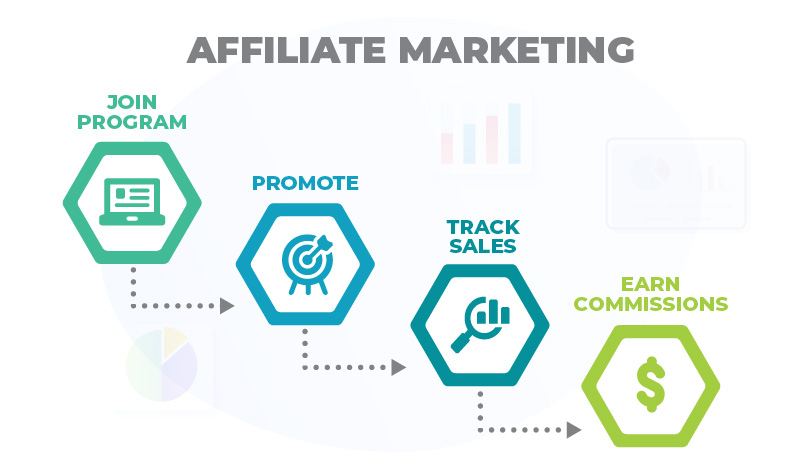
Advanced Strategies for Affiliate Marketing Success
- Leverage SEO: Optimize your content for search engines to drive organic traffic. Focus on long-tail keywords relevant to your niche.
- Utilize Social Media: Share your content on social media platforms to reach a wider audience. Use paid ads to boost visibility.
- Email Marketing: Build an email list and send regular newsletters featuring your affiliate links and valuable content.
- Product Comparisons: Create comparison articles or videos that highlight the pros and cons of different products, helping users make informed decisions.
- Webinars and Tutorials: Host webinars or create video tutorials to demonstrate how to use the products you’re promoting, providing added value to your audience.
Common Mistakes to Avoid
- Over-Promotion: Avoid bombarding your audience with affiliate links. Focus on providing value and building trust.
- Ignoring Analytics: Failing to track your performance can result in missed opportunities for optimization.
- Choosing Irrelevant Products: Promote products that align with your niche and audience interests to maintain credibility.
- Neglecting Disclosures: Always disclose your affiliate relationships to maintain clarity and trust with your audience.
Conclusion
Affiliate marketing offers a lucrative opportunity for those willing to put in the effort to build and engage an audience. By choosing the right niche, creating quality content, and employing effective marketing strategies, you can turn affiliate marketing into a significant source of income. Remember, success in affiliate marketing doesn’t happen overnight, but with persistence and dedication, you can unlock its full potential and enjoy the rewards.
Share Your Images & Be Featured
Want to know the one thing that every successful digital marketer does first to ensure they get the biggest return on their marketing budget? It’s simple: goal-setting. This is an absolutely essential practice for any digital marketer who knows how to execute their campaigns in a productive, cost-effective way. With a few. With a few simple tips, you can be doing the same in no time! In this blog, we’ll walk you through the first steps every savvy digital marketer takes to ensure that they’re on target to hit all their marketing objectives. Get ready for revenue!
Remember: even if the channel you’re considering is all the rage right now, it might not fit your brand. Always make informed decisions that directly relate to your company. Otherwise, your message won’t be delivered to its intended audience and you’ll have wasted time, effort and money.
Know Your Digital Goals
The first step is clearly identifying which goals you want to achieve. Get specific. Do you want to increase brand awareness? Are you all about locking in leads? Do you want to establish a strong network of influencers that can help you be discovered? How about pushing engagement on social media?


Get Specific
A useful tool for narrowing down your goals to ensure they’re viable is the SMART mnemonic. It’s important to get specific to understand exactly what you’re working towards, and help you break down the process of hitting your targets. This is exactly what this mnemonic helps you to achieve.
- Does the channel reach my intended audience?
- Is the channel sustainable and affordable within my company’s marketing budget?
- Will I be able to measure the success of the channel?
- Does the channel allow me to express my brand’s intended message?
- Do the channels I’m considering work together to convey my message?

Always Remember Your Goals!
Establishing a solid vision for your business is the first step to planning your digital marketing budget. Always keep your final goals in sight when organising anything for your company. When deciding which steps to take next in your business, ask yourself how they will help you achieve the goals you outlined in Step #1. This will ensure that you stay on track and prevent you from spending your budget on anything that won’t help you achieve.
Cum et essent similique. Inani propriae menandri sed in. Pericula expetendis has no,
quo populo forensibus contentiones et, nibh error in per.Denis Robinson
As your budget progresses and evolves, continue referring to your SMART objectives. Stay focused and remember your goals – they will always inform what your next step will be!
AMAZING Natural Light Portraits in a Garage?
Want to know the one thing that every successful digital marketer does first to ensure they get the biggest return on their marketing budget? It’s simple: goal-setting. This is an absolutely essential practice for any digital marketer who knows how to execute their campaigns in a productive, cost-effective way. With a few. With a few simple tips, you can be doing the same in no time! In this blog, we’ll walk you through the first steps every savvy digital marketer takes to ensure that they’re on target to hit all their marketing objectives. Get ready for revenue!
Remember: even if the channel you’re considering is all the rage right now, it might not fit your brand. Always make informed decisions that directly relate to your company. Otherwise, your message won’t be delivered to its intended audience and you’ll have wasted time, effort and money.
Know Your Digital Goals
The first step is clearly identifying which goals you want to achieve. Get specific. Do you want to increase brand awareness? Are you all about locking in leads? Do you want to establish a strong network of influencers that can help you be discovered? How about pushing engagement on social media?


Get Specific
A useful tool for narrowing down your goals to ensure they’re viable is the SMART mnemonic. It’s important to get specific to understand exactly what you’re working towards, and help you break down the process of hitting your targets. This is exactly what this mnemonic helps you to achieve.
- Does the channel reach my intended audience?
- Is the channel sustainable and affordable within my company’s marketing budget?
- Will I be able to measure the success of the channel?
- Does the channel allow me to express my brand’s intended message?
- Do the channels I’m considering work together to convey my message?

Always Remember Your Goals!
Establishing a solid vision for your business is the first step to planning your digital marketing budget. Always keep your final goals in sight when organising anything for your company. When deciding which steps to take next in your business, ask yourself how they will help you achieve the goals you outlined in Step #1. This will ensure that you stay on track and prevent you from spending your budget on anything that won’t help you achieve.
Cum et essent similique. Inani propriae menandri sed in. Pericula expetendis has no,
quo populo forensibus contentiones et, nibh error in per.Denis Robinson
As your budget progresses and evolves, continue referring to your SMART objectives. Stay focused and remember your goals – they will always inform what your next step will be!

